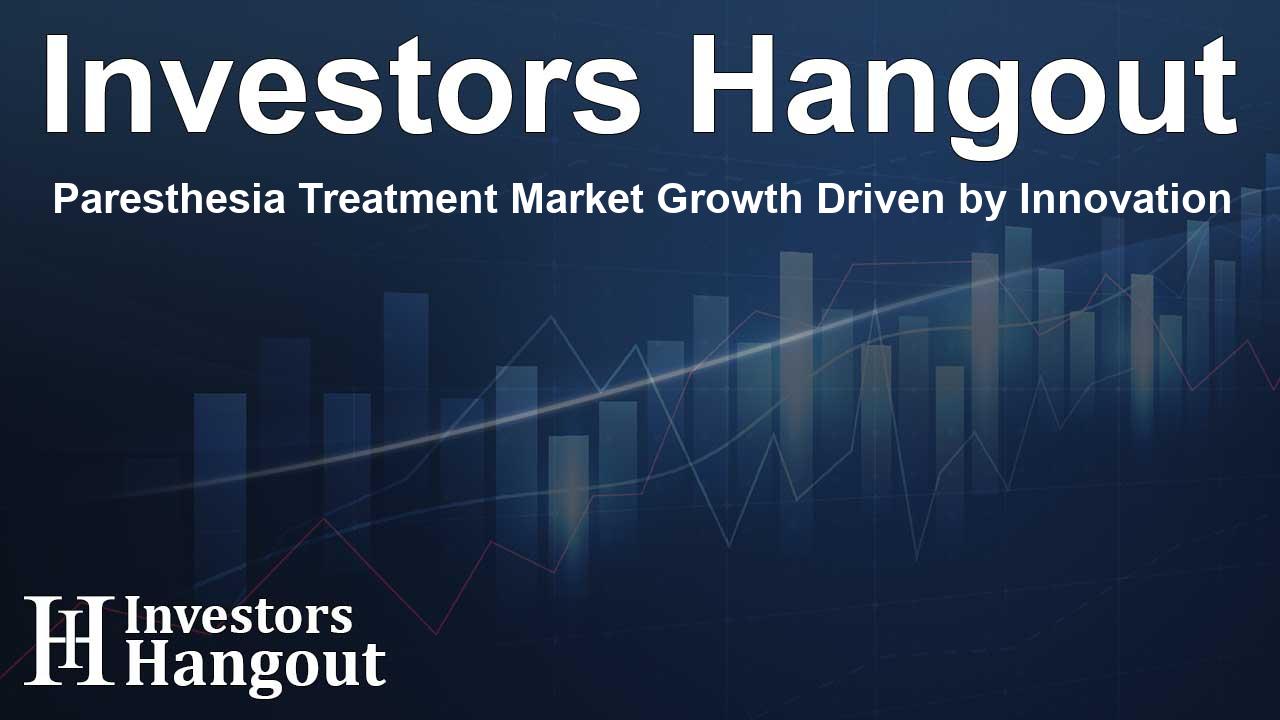Paresthesia Treatment Market Growth Driven by Innovation

Paresthesia Treatment Market Overview
The global paresthesia treatment market is on a promising trajectory, experiencing remarkable growth due to several key factors. The rise in neurological disorders, coupled with advancements in medical technology, is pivotal in shaping the future of this market. As the demand for effective treatment options increases, the market, valued at USD 5.4 billion, is anticipated to grow significantly, reaching USD 8.0 billion in the coming years.
The Growing Need for Paresthesia Treatments
Paresthesia, marked by sensations of tingling or numbness, impacts millions worldwide. Commonly caused by conditions such as diabetes, multiple sclerosis, and repetitive strain injuries, there is a substantial market for its treatment. With approximately 40% of diabetes patients experiencing neuropathy and many adults suffering from peripheral neuropathy, the urgency for innovative therapies continues to escalate.
Current Trends Driving Growth
Several trends are driving the expansion of the paresthesia treatment market. The increasing integration of artificial intelligence in diagnosis coupled with enhanced patient education about available treatments notably contributes to this growth. Furthermore, advancements in telemedicine and remote monitoring technologies have made it easier for patients to access care, leading to early diagnoses and improved treatment efficacy.
Technological Advancements in Paresthesia Treatments
As technology evolves, so does the scope of treatment options available for paresthesia. Innovations include advanced neuromodulation devices, such as spinal cord stimulators and safer, non-opioid pain management solutions. A notable increase in research and development investments from major pharmaceutical companies supports the emergence of these technologies, ultimately improving patient outcomes.
Industry Collaboration and Innovation
Collaboration between biotech firms and research institutions plays a significant role in enhancing treatment developments. Through these partnerships, innovative solutions like gene therapies and regenerative medicine approaches are gaining traction, promising breakthrough improvements in managing neuropathic conditions.
Market Dynamics and Drivers
Several dynamic factors are influencing the paresthesia treatment market's growth. An increasing prevalence of chronic diseases such as diabetes and obesity has propelled demand for new treatments. Additionally, the rise in healthcare expenditure worldwide allows for broader access to advanced treatment options.
Regulatory Support and Market Approvals
Regulatory bodies are continuously working to fast-track approvals for groundbreaking treatments. This supportive environment encourages investment in new therapies, especially those focusing on monitoring and early intervention for paresthetic conditions.
Leading Companies in the Paresthesia Treatment Market
Several key players dominate the paresthesia treatment market, including Pfizer Inc., Novartis AG, GSK PLC, and Merck & Co., Inc. These companies are leading the charge in innovation, focusing on enhancing therapeutic options and expanding accessibility to treatments across various demographics.
Recent Developments in the Market
Recent news highlights the ongoing developments in the paresthesia space:
- Medtronic has launched its new spinal cord stimulation device aimed at improved pain relief.
- A recent study published in a leading neurology journal reveals significant advancements in combination therapies for chronic paresthesia.
- Another pharmaceutical giant recently received FDA approval for a novel nerve regeneration drug that is expected to change treatment paradigms.
- A startup specializing in wearable neuromodulation devices raised $50 million in funding, aiming to enhance research efforts.
Frequently Asked Questions
Q1: What is the current size of the Paresthesia Treatment Market?
The market is valued at USD 5.4 billion and set to reach USD 8.0 billion by the projected timelines.
Q2: What factors drive the growth of this market?
Key drivers include rising neurological disorders, advancements in treatment technologies, and increased healthcare investments.
Q3: Which regions lead in market share?
Northern America is a leader due to its advanced healthcare systems and high medical expenditure.
Q4: What are the latest trends in treatment solutions?
A significant trend is the adoption of AI technologies and non-invasive treatment methods, which are becoming more common.
Q5: Who are the prominent players in the market?
The market features major companies such as Pfizer Inc. and Novartis AG, who are heavily involved in innovations.
About The Author
Contact Hannah Lewis privately here. Or send an email with ATTN: Hannah Lewis as the subject to contact@investorshangout.com.
About Investors Hangout
Investors Hangout is a leading online stock forum for financial discussion and learning, offering a wide range of free tools and resources. It draws in traders of all levels, who exchange market knowledge, investigate trading tactics, and keep an eye on industry developments in real time. Featuring financial articles, stock message boards, quotes, charts, company profiles, and live news updates. Through cooperative learning and a wealth of informational resources, it helps users from novices creating their first portfolios to experts honing their techniques. Join Investors Hangout today: https://investorshangout.com/
The content of this article is based on factual, publicly available information and does not represent legal, financial, or investment advice. Investors Hangout does not offer financial advice, and the author is not a licensed financial advisor. Consult a qualified advisor before making any financial or investment decisions based on this article. This article should not be considered advice to purchase, sell, or hold any securities or other investments. If any of the material provided here is inaccurate, please contact us for corrections.
